
How to Use Blood Pressure Sensor: Examples, Pinouts, and Specs
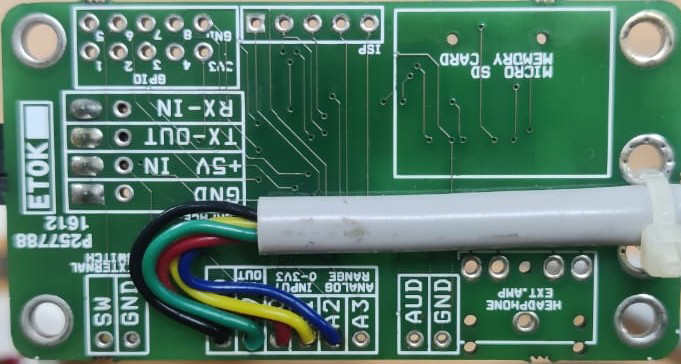
 Design with Blood Pressure Sensor in Cirkit Designer
Design with Blood Pressure Sensor in Cirkit DesignerIntroduction
The Blood Pressure Sensor (Manufacturer: Sunrom, Part ID: 1437) is a device designed to measure the pressure of blood in the arteries. It is commonly used in medical and health monitoring applications to assess cardiovascular health. This sensor provides an analog output proportional to the blood pressure, making it suitable for integration into microcontroller-based systems for real-time monitoring and data logging.
Explore Projects Built with Blood Pressure Sensor
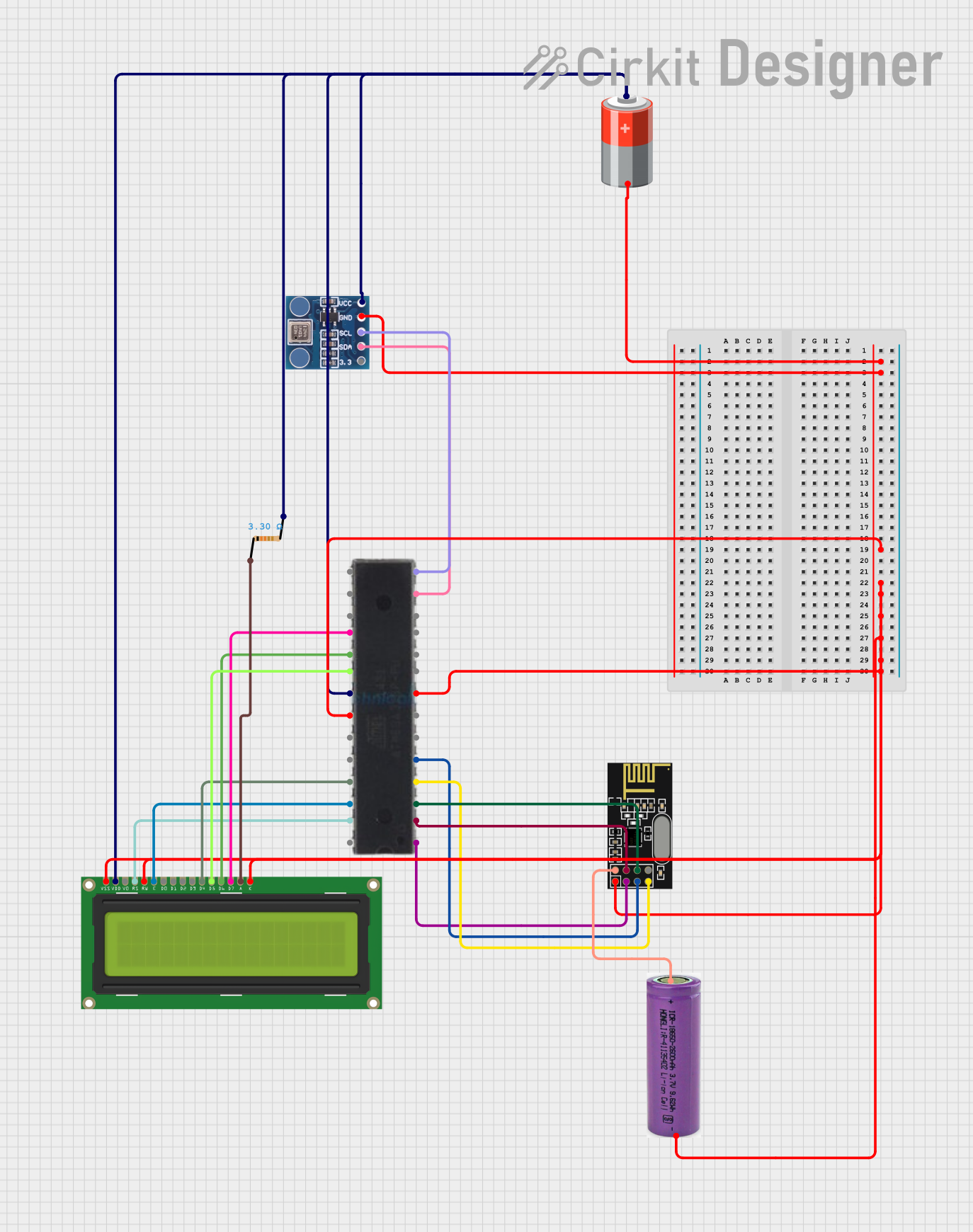
 Open Project in Cirkit Designer
Open Project in Cirkit Designer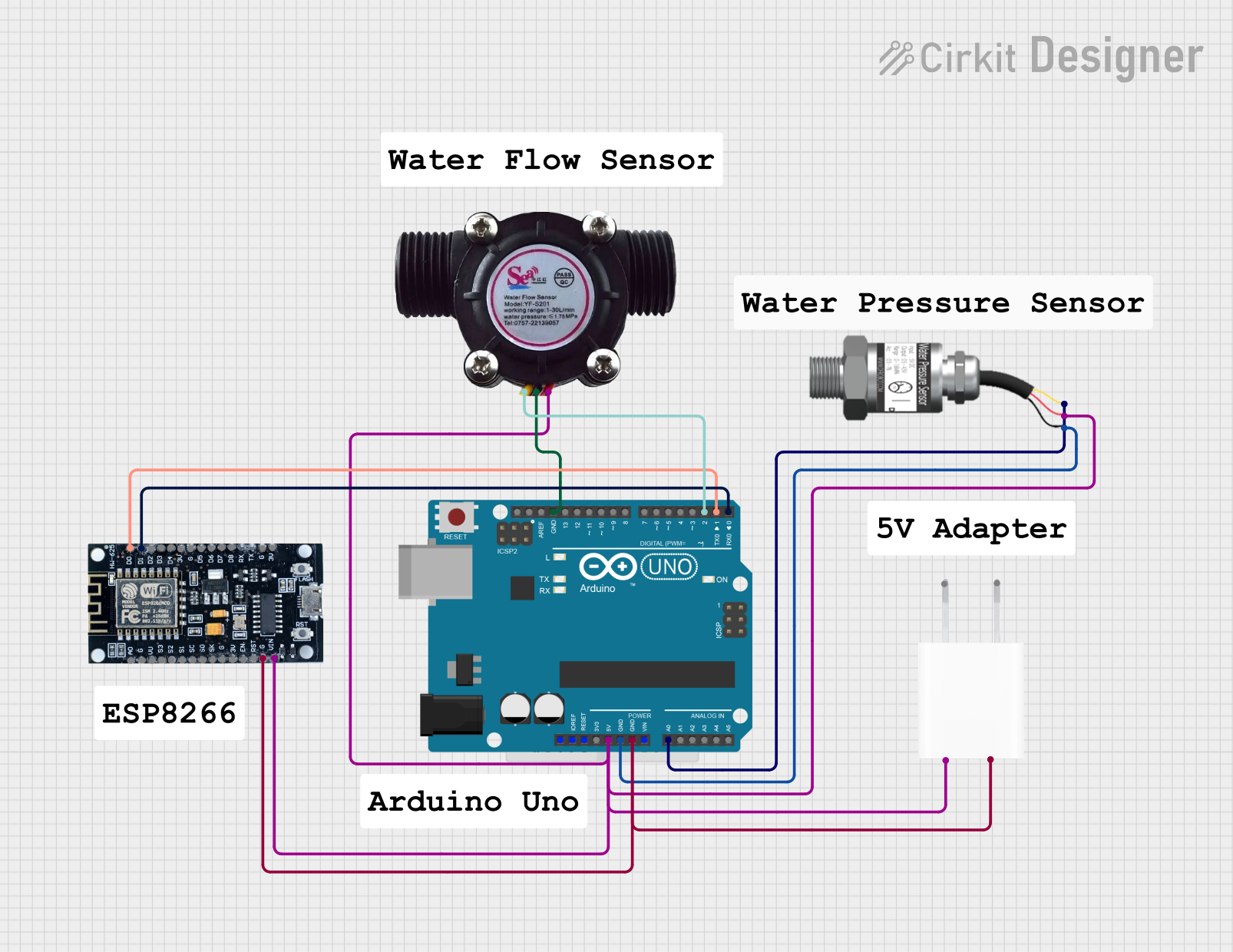
 Open Project in Cirkit Designer
Open Project in Cirkit Designer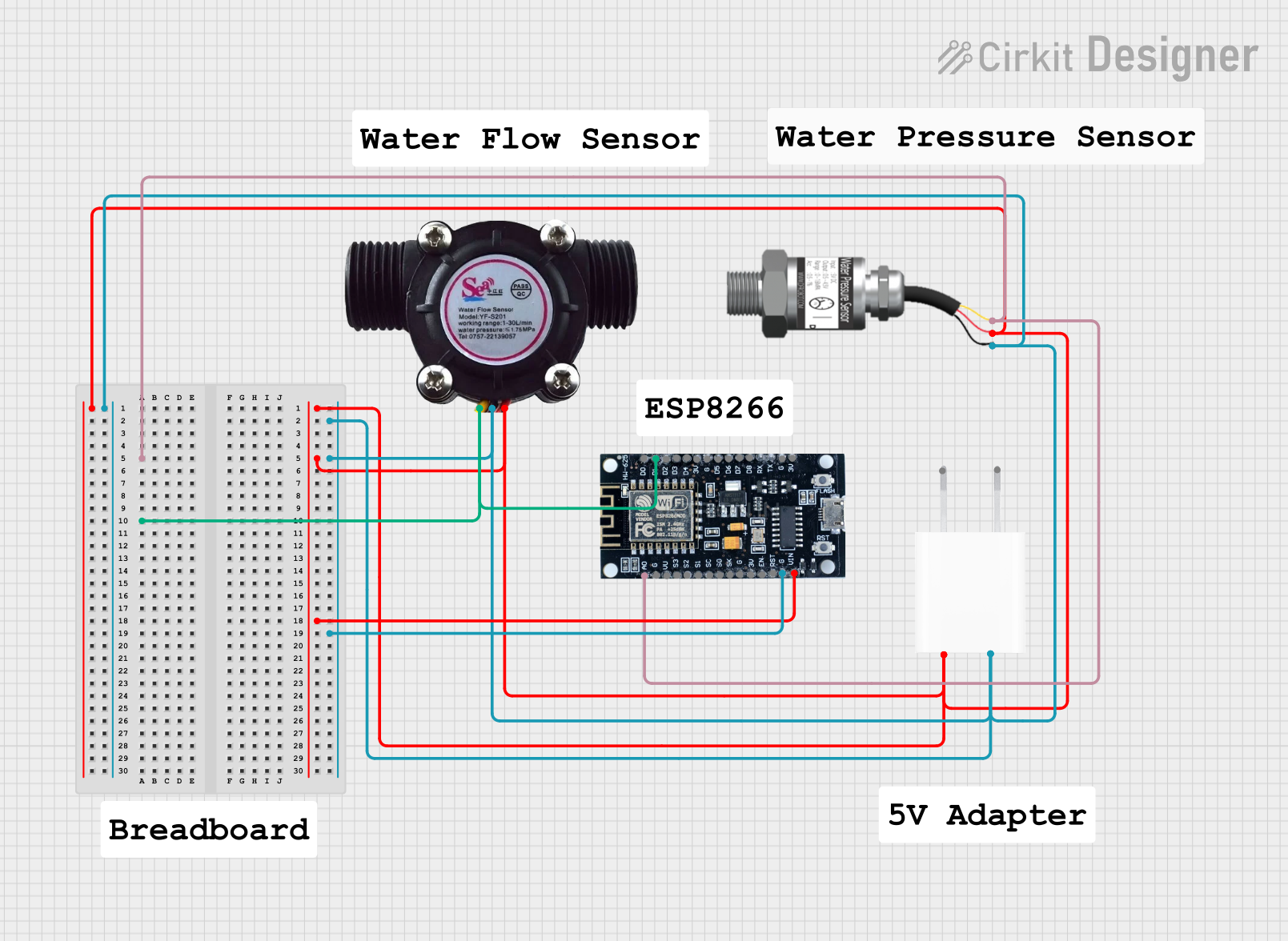
 Open Project in Cirkit Designer
Open Project in Cirkit Designer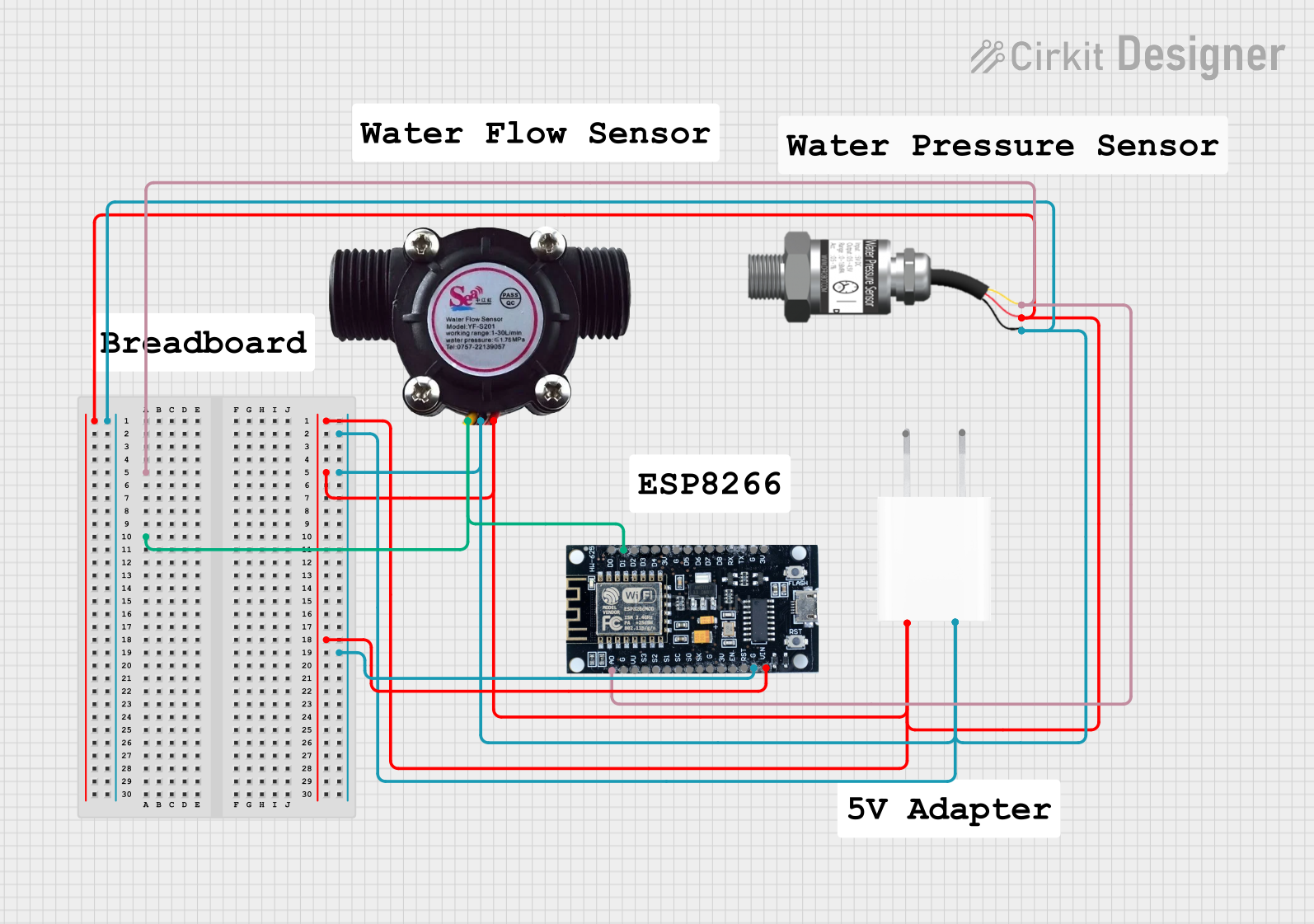
 Open Project in Cirkit Designer
Open Project in Cirkit DesignerExplore Projects Built with Blood Pressure Sensor

 Open Project in Cirkit Designer
Open Project in Cirkit Designer
 Open Project in Cirkit Designer
Open Project in Cirkit Designer
 Open Project in Cirkit Designer
Open Project in Cirkit Designer
 Open Project in Cirkit Designer
Open Project in Cirkit DesignerCommon Applications and Use Cases
- Medical devices for blood pressure monitoring
- Wearable health monitoring systems
- Research and development in biomedical engineering
- Home healthcare devices
- IoT-based health monitoring solutions
Technical Specifications
The following table outlines the key technical details of the Sunrom 1437 Blood Pressure Sensor:
| Parameter | Value |
|---|---|
| Operating Voltage | 5V DC |
| Output Signal | Analog voltage (0-5V) |
| Pressure Range | 0 to 300 mmHg |
| Accuracy | ±3 mmHg |
| Operating Temperature | 10°C to 50°C |
| Interface Type | Analog |
| Dimensions | 50mm x 30mm x 15mm |
Pin Configuration and Descriptions
The Sunrom 1437 Blood Pressure Sensor has a 3-pin interface. The pin configuration is as follows:
| Pin | Name | Description |
|---|---|---|
| 1 | VCC | Power supply input (5V DC) |
| 2 | GND | Ground connection |
| 3 | OUT | Analog output signal proportional to blood pressure |
Usage Instructions
How to Use the Component in a Circuit
- Power the Sensor: Connect the
VCCpin to a 5V DC power supply and theGNDpin to the ground of your circuit. - Read the Output: Connect the
OUTpin to an analog input pin of a microcontroller (e.g., Arduino UNO) to read the sensor's output voltage. - Calibrate the Sensor: Use a known reference to calibrate the sensor for accurate blood pressure readings. The output voltage corresponds to the measured pressure in mmHg.
- Process the Data: Use the microcontroller to convert the analog signal into meaningful blood pressure values using the sensor's specifications.
Important Considerations and Best Practices
- Ensure the sensor is powered with a stable 5V DC supply to avoid inaccurate readings.
- Avoid exposing the sensor to temperatures outside the operating range (10°C to 50°C).
- Use proper shielding and grounding to minimize noise in the analog output signal.
- Regularly calibrate the sensor to maintain accuracy over time.
- Handle the sensor carefully to avoid physical damage to the sensitive components.
Example Code for Arduino UNO
Below is an example code snippet to interface the Sunrom 1437 Blood Pressure Sensor with an Arduino UNO:
// Define the analog pin connected to the sensor's OUT pin
const int sensorPin = A0;
// Variable to store the sensor's analog output
int sensorValue = 0;
void setup() {
// Initialize serial communication for debugging
Serial.begin(9600);
}
void loop() {
// Read the analog value from the sensor
sensorValue = analogRead(sensorPin);
// Convert the analog value (0-1023) to voltage (0-5V)
float voltage = sensorValue * (5.0 / 1023.0);
// Convert the voltage to blood pressure in mmHg
// Assuming a linear relationship: 0V = 0 mmHg, 5V = 300 mmHg
float bloodPressure = (voltage / 5.0) * 300.0;
// Print the blood pressure value to the Serial Monitor
Serial.print("Blood Pressure: ");
Serial.print(bloodPressure);
Serial.println(" mmHg");
// Wait for 1 second before the next reading
delay(1000);
}
Troubleshooting and FAQs
Common Issues Users Might Face
No Output Signal:
- Cause: Incorrect wiring or insufficient power supply.
- Solution: Verify the connections and ensure the sensor is powered with 5V DC.
Inaccurate Readings:
- Cause: Sensor not calibrated or exposed to electrical noise.
- Solution: Calibrate the sensor using a known reference and ensure proper grounding.
Fluctuating Output:
- Cause: Unstable power supply or environmental interference.
- Solution: Use a regulated power supply and minimize external noise sources.
Sensor Not Responding:
- Cause: Operating outside the specified temperature range.
- Solution: Ensure the sensor is used within the 10°C to 50°C range.
Solutions and Tips for Troubleshooting
- Double-check all connections and ensure the sensor is properly interfaced with the microcontroller.
- Use a multimeter to measure the output voltage directly from the sensor to verify its functionality.
- If the sensor is not working as expected, consult the manufacturer's datasheet for additional details and troubleshooting steps.
By following this documentation, users can effectively integrate the Sunrom 1437 Blood Pressure Sensor into their projects and achieve accurate blood pressure monitoring.